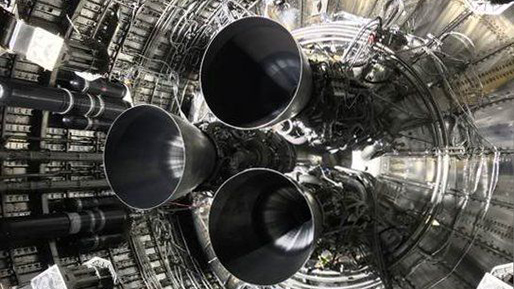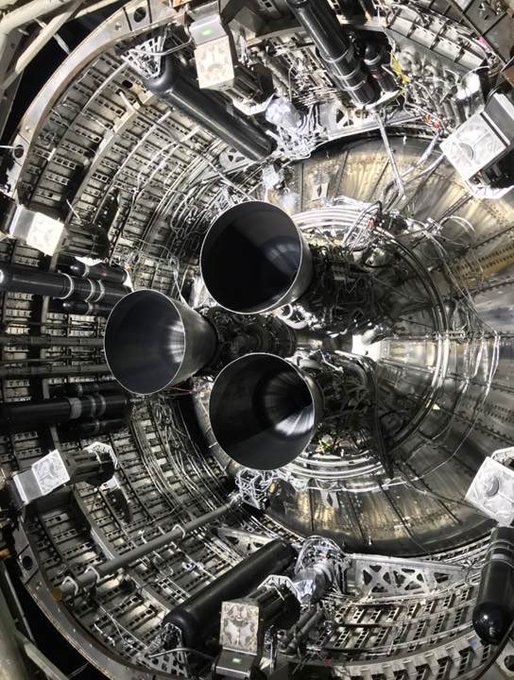SpaceX fires up 3-engine Starship SN8 prototype ahead of epic test flight

SpaceX's next-gen Starship vehicle just took a big step toward its next milestone leap.
Early this morning (Oct. 20), SpaceX lit up the three Raptor engines on its SN8 ("Serial No. 8") Starship prototype in a brief "static fire" test at the company's South Texas site, near the beachside village of Boca Chica.
Static fires, in which engines are ignited while a launch vehicle remains tethered to the ground, are a common precursor to flight. And SN8 does have a launch coming up — an uncrewed test flight later this month or next that will reach a maximum altitude of about 11 miles (18 kilometers), if all goes according to plan.
Related: Starship and Super Heavy: SpaceX's Mars-colonizing vehicles in images
Starship SN8 STATIC FIRE!! The first-ever triple Raptor Static Fire!Mary (@BocaChicaGal) documenting history again!➡️https://t.co/UGPoVVF5dt pic.twitter.com/NzCimSNp9OOctober 20, 2020
That will be the highest, by far, that a Starship prototype has ever flown. Three previous, single-engine iterations have reached about 500 feet (150 meters), most recently in August and September of this year, when the SN5 and SN6 vehicles took to the skies.
SN5 and SN6 looked like grain silos, as SN8 does now. But the newest vehicle will look far more spaceship-y when it takes off, sporting a nose cone and orientation-controlling body flaps, Musk has said.
And those features will be installed soon, given the results of this morning's static fire, Musk said.
Breaking space news, the latest updates on rocket launches, skywatching events and more!
"Data from 3 engine Starship static fire this morning looks good. Proceeding with nosecone mate," he tweeted this afternoon.
The many prototypes are all informing the final design of Starship, which Musk has said will be powered by six Raptors — three "sea level" versions like the ones that fired up this morning, and three "vacuum" variants with much larger nozzles, which are optimized for in-space use. The 165-foot-tall (50 m) Starship vehicle will launch from Earth atop a huge rocket called Super Heavy, which will sport about 30 Raptors of its own.
Both vehicles will be fully and rapidly reusable. SpaceX eventually plans to use Starship and Super Heavy for all of its spaceflight needs, from launching satellites to carrying people and payloads to the moon, Mars and other distant destinations.
For example, Starship is in the running to provide crewed lunar landing services for NASA's Artemis program, which aims to land two astronauts at the moon's south pole in 2024.
The Raptor engine is also well suited for Mars colonization, one of the chief long-term goals of Musk and SpaceX. Raptors are fueled by liquid oxygen and methane, both of which can be made efficiently on the Red Planet using local resources, Musk has stressed. (Merlin engines, which power SpaceX's Falcon 9 and Falcon Heavy rockets, employ liquid oxygen and a form of kerosene.)
Editor's note: This story was updated at 7:45 p.m. EDT with the news that the static fire data look good, according to a tweet by Elon Musk.
Mike Wall is the author of "Out There" (Grand Central Publishing, 2018; illustrated by Karl Tate), a book about the search for alien life. Follow him on Twitter @michaeldwall. Follow us on Twitter @Spacedotcom or Facebook.

Michael Wall is a Senior Space Writer with Space.com and joined the team in 2010. He primarily covers exoplanets, spaceflight and military space, but has been known to dabble in the space art beat. His book about the search for alien life, "Out There," was published on Nov. 13, 2018. Before becoming a science writer, Michael worked as a herpetologist and wildlife biologist. He has a Ph.D. in evolutionary biology from the University of Sydney, Australia, a bachelor's degree from the University of Arizona, and a graduate certificate in science writing from the University of California, Santa Cruz. To find out what his latest project is, you can follow Michael on Twitter.

